Adding an extra zero can often sweeten a deal. That's definitely the case for prize winnings, but does that rule also apply to Peugeots?
Take the Peugeot 208 – a handsome, well-rounded hatchback with a seriously snazzy interior. Add a zero, and you get the Peugeot 2008 – the 208's chunkier, more practical SUV sibling – but which is the best choice for you?
We'll compare these two popular Peugeots side-by-side so you can pick the one that fits with your needs and budget. Big savings are available on either model by buying or financing them as a used car from Motorpoint.
Peugeot 208 vs Peugeot 2008 compared
| Peugeot 208 | Peugeot 2008 |
Pros:
| Pros:
|
Cons:
| Cons:
|
Styling and design
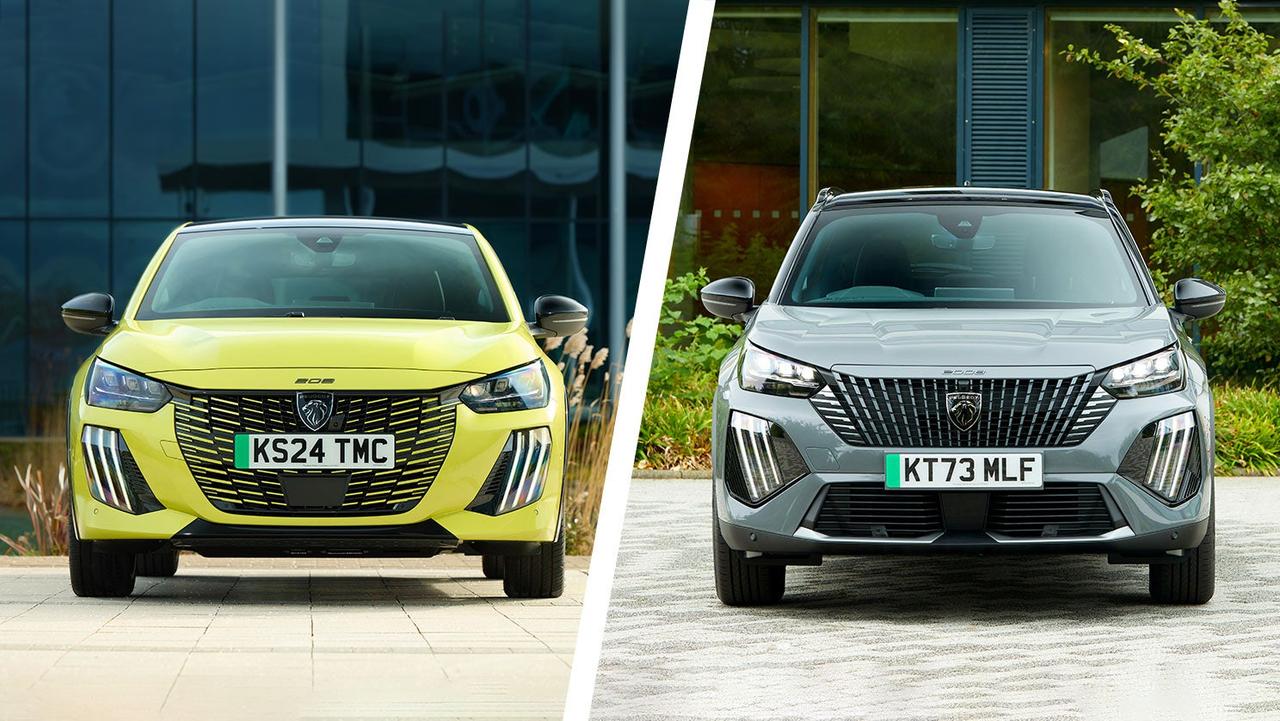
Both the 208 and 2008 clearly share DNA in their front-end design. You get angular, feline headlights with distinctive slash-like running lights beneath them. In the middle, there's a broad shield-shaped grille, although this feature is oversized on the compact 208 – contrary to many other hatchback-SUV pairings, which see the larger car get the larger features. At the rear, both cars have a blacked-out full-width brakelight unit with claw-mark-shaped light clusters at either side.
The styling diverges more obviously when you look at the two cars from the side. In profile, the 208 has quite a traditional hatchback silhouette considering how bold the styling at either end is. There's a stubby bonnet leading to a rounded but somewhat ordinary passenger compartment, though we do like the big side windows which let in more light than the small portholes found on rivals with 'sporty' rising belt lines.
Take in the 2008's side view and it's much more obviously an SUV. The bodywork is squarer, with a flatter, longer roof and fewer curves to be found. Peugeot's also added some neat faceting over the doors and wheelarches that helps break up the 2008's metalwork and further underscore its muscular SUV presence.
Interior and practicality
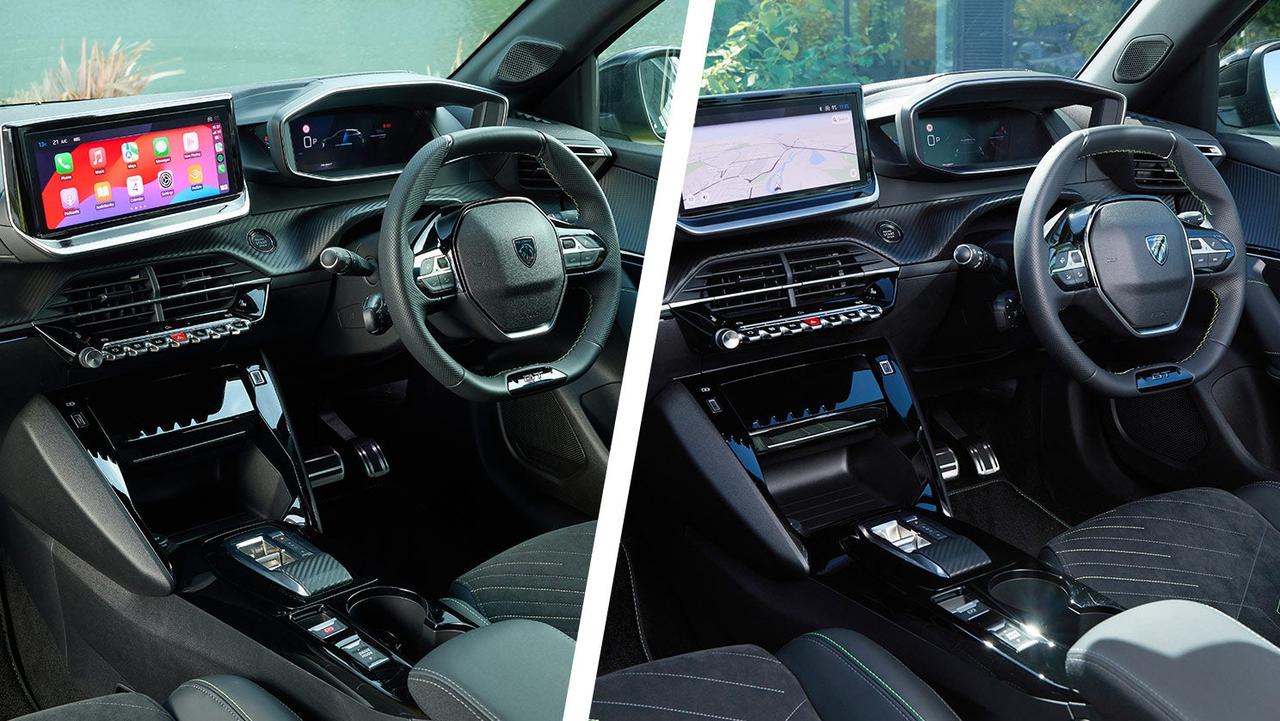
The dashboard design is essentially identical in both cars, with plush materials and cabin styling that's far more enticing than rivals like the Ford Fiesta or Volkswagen Polo. You get Peugeot's oddly small steering wheel to make three-point turns a doddle, and a stylish pod with either analogue or digital driver's dials, which you view over the shrunken wheel, rather than through it. In the centre, the infotainment system is mounted high up, close to your eyeline with a few piano-key-style buttons beneath it for regularly used features like hazard lights and windscreen defoggers.
This unusual dashboard setup and minimalist approach to buttons means overall ergonomics in both cars are a little compromised. For example, you can only adjust the climate control through the touchscreen, which is fiddly on the move. The infotainment system itself looks sharp with modern graphics, especially on facelifted cars, but doesn't always respond quickly to inputs, which can leave you jabbing the screen in frustration. All models, at least, get Apple CarPlay and Android Auto as standard, so you can bypass the built-in software. Both cars also score a point for featuring a physical volume knob, which can be easily adjusted at a glance.
As for practicality, there are no prizes for guessing the larger 2008 SUV is the more spacious choice. Nevertheless, the 208 makes a good case for itself against similar rivals, with just enough rear-seat space for adults and a 311-litre boot that's large enough for most day-to-day jobs – and matches a Ford Fiesta. That said, if you need to carry regular rear-seat passengers, or have kids in child seats, the 2008 is a much better choice, with more room in all dimensions, and better access through wider door openings, plus a 434-litre boot that's large enough for a pushchair.
Engines and performance
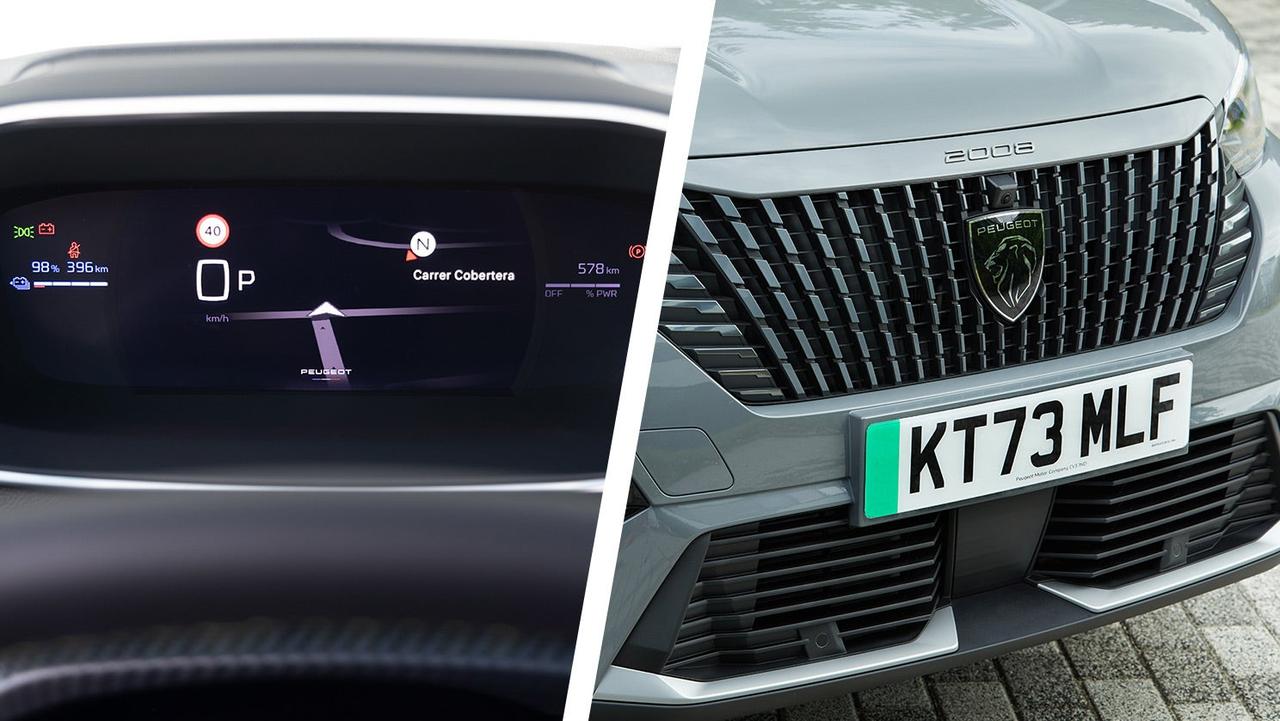
Engine ranges for both cars are fairly similar and were overhauled in late 2023, when both cars were facelifted. Earlier cars came with a 1.2-litre turbo petrol engine with either 100 or 130hp, with a further 155hp option in the 2008. The 208 had the option of an entry-level non-turbo 75hp petrol, while both also offered a 1.5-litre diesel engine for high-mileage drivers.
Regardless of the model chosen, the 1.2-litre petrol is a stellar performer and our pick of the range. It has lots of low-down grunt to make town driving easy, and enough top-end performance to whisk the car up to motorway speeds effortlessly. You can't fight physics, however, so the smaller, lighter 208 is noticeably quicker when equipped with the same engines. Facelifted models from 2023 onwards have ditched diesel engines entirely and added a new 136hp hybrid option, which scores strong economy figures and comes as standard with a six-speed automatic gearbox.
Both models are optionally available as electric cars. Pre-facelift versions use a 50kWh battery, which returns an advertised 194-mile range in the 208, or 193 miles in the 2008. The 100kW (134hp) electric motor gives both cars zingy acceleration at lower speeds but, like the fuel-powered engines, feels even more insistent in the smaller 208. Updates in the 2023 facelift meant both EVs now get a choice of battery size – the 208 with a 50 or 51kWh pack with 206 and 232 miles of range respectively, while the 2008 gets 201 miles from a 50kWh pack or 227 from its 54kWh option.
Driving
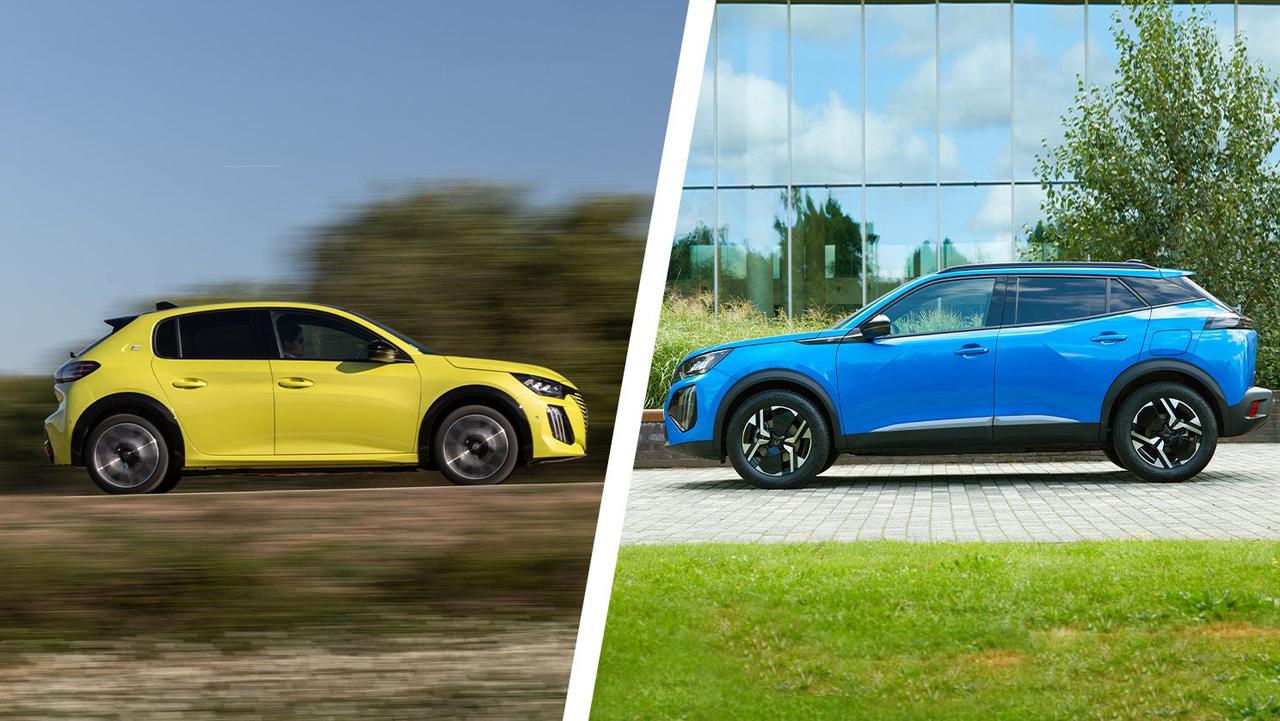
There are sportier hatchbacks and there are comfier hatchbacks, but few can match the 208's ability to blend these two qualities. Through corners, it feels agile and level, giving you the confidence to aim the car right at the corner apex – but this fleet-footedness doesn't come with the usual penalty of stiff springs to cope with bumps in the road. Instead, the 208 flows with uneven surfaces and softens the impact of potholes adeptly, making this one of the easiest small cars to drive long distances in. The punchy engines also mean you're not constantly stirring the gearbox to make progress, further reducing the effort needed to drive the 208.
In the 2008, you immediately notice you're sat higher up which, combined with the softer suspension, means the car feels a little more roly-poly in the corners. It's well controlled, however, and will only bother you if you decide to treat a country road like a rally stage. Save your lead foot and you'll start to appreciate the 2008's more softly sprung driving experience, floating elegantly over bumps better than some luxury cars that cost several times the price. And, like the 208, the pursuit of ride and handling hasn't affected the overall ease of driving the 2008, with light, accurate controls, good visibility and solid composure over all surfaces.
Value and reliability
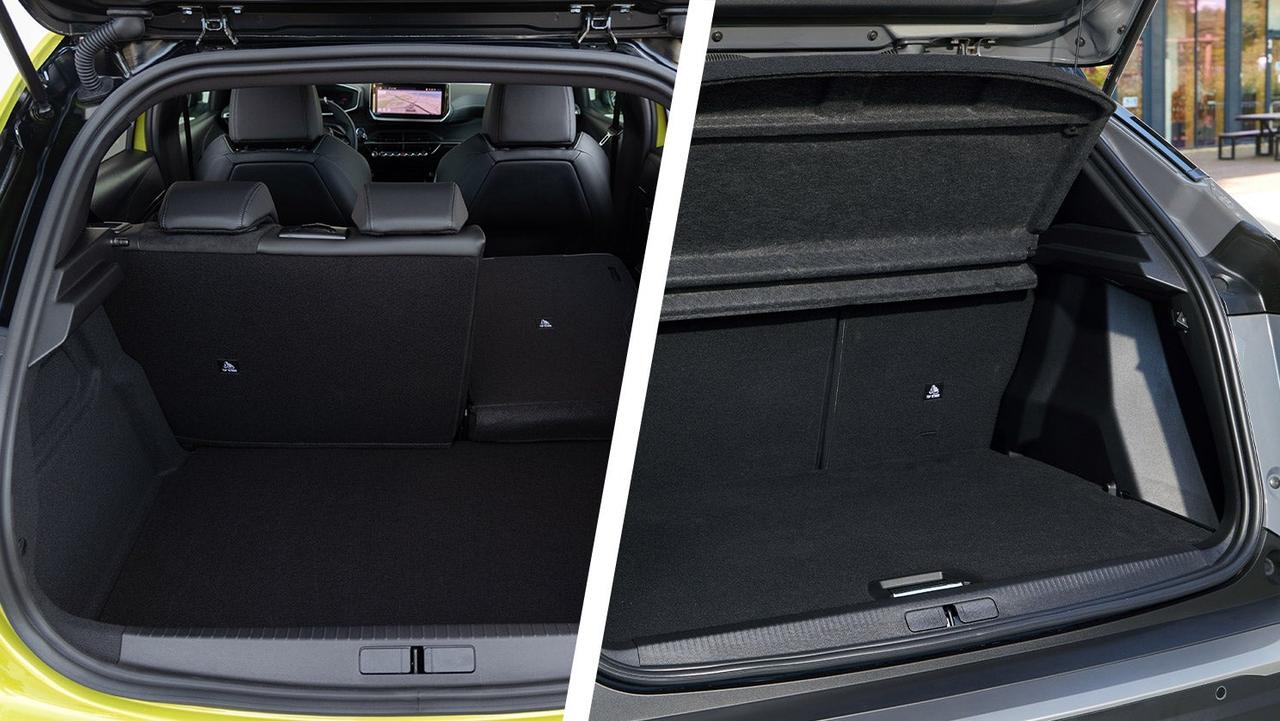
As brand-new cars, Peugeot charges around £4,000 more for a 2008 over an equivalent 208. However, that gap closes noticeably on the used market. Find a used example of each with comparable engine and trim choices, and the gap could be as little as £1,000 – on top of the fact used versions are already far more affordable than brand-new models. As a result, you don't have to pay that much more money to enjoy the 2008's better practicality – that can translate to just a few dozen extra pounds per month on a finance agreement. Of course, however, a like-for-like 2008 won't be as quick or handle as well as the smaller, lighter 208.
Peugeot usually returns fairly average scores in reliability surveys. That's partially a reflection of how widespread the brand is, along with the fact that modern Peugeots come with many more features than past models, which means more things that could potentially fail. Nevertheless, you can expect years of trouble-free service from your Peugeot if you keep up with scheduled maintenance. You can also take out an extended warranty when you buy your 208 or 2008, which will protect you from the cost of unexpected mechanical or electrical failures.
Which is best?
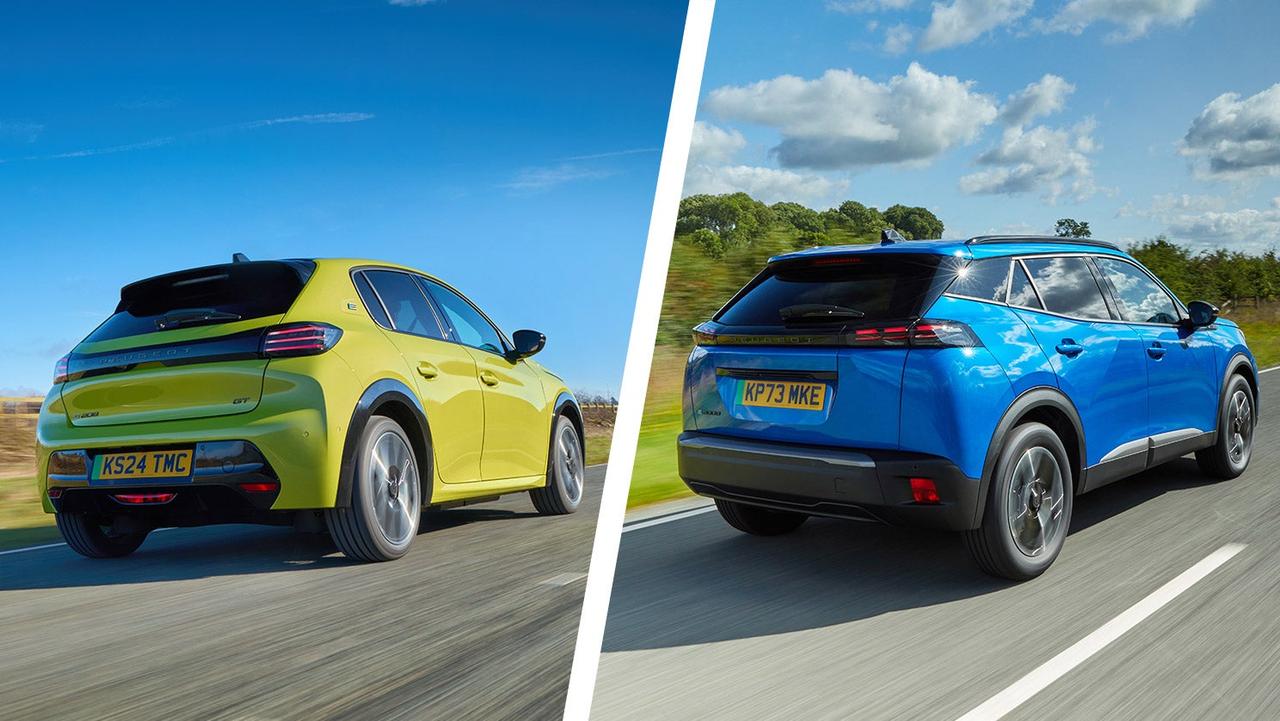
If you're a single buyer or a couple, who only needs to use the rear seats for occasional lifts, the 208 should be all the car you need. There's just enough room to carry passengers and you can fold the rear seats down if you need to carry big or bulky cargo. It's also the better-driving car of the two, with punchier acceleration from the same engines and a far greater sense of agility on tight, twisty roads – all without compromising its mature, comfortable ride quality.
For family buyers or drivers with regular back-seat passengers, the 2008 is the better choice. There's actually enough room for second-row occupants to sit comfortably, and the boot can hold a pushchair or a medium-sized dog without needing to fold the rear seats. It's not quite as fun to drive as the 208, but its comfort and composure means it's still a very easy car to live with on a daily basis. And the fact prices are so close on the used market means it doesn't cost that much extra to step up from the 208 to the 2008.
Buy or finance your used Peugeot 208 or used Peugeot 2008 from Motorpoint to save thousands on the brand-new price. If you've not made up your mind but know you fancy something Gallic in your garage, check out our picks for the best French cars on sale.



































